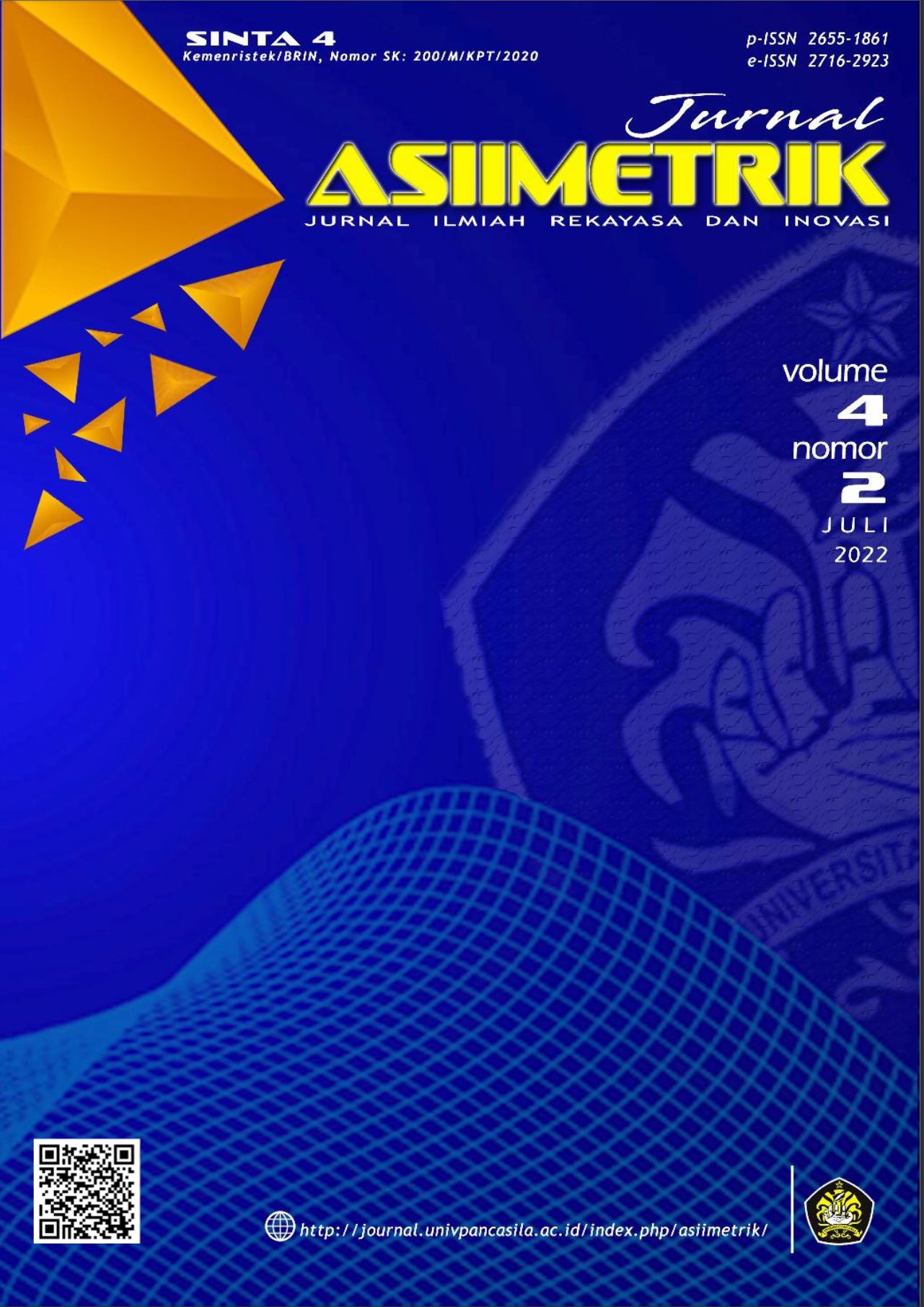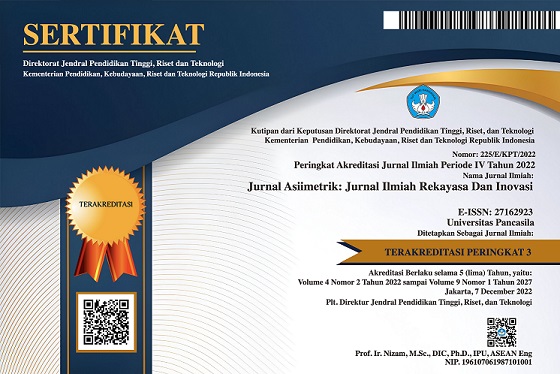Komparasi Simulasi CFD Pada Turbin Cross-Flow Dengan Model Turbulen k-ε STD dan RNG k-ε
DOI:
https://doi.org/10.35814/asiimetrik.v4i1.3100Keywords:
cross-flow runner, CFD Simulation, RNG k-ε turbulence modelAbstract
The cross-flow turbine is one of widely used impulse turbine in power generator system due to it’s simple design and ability to be applied to a wide range of head and flow conditions. The flow in a cross-flow turbine flows in a crossed manner and works in 2 stages which could affect the turbine’s performance. Hence the visualization of these flow behavior could indicate the performance. Complexity of the flow inside the runner require the usage of CFD Method to visualize the flow, leaving the gap since numerical model also rely on turbulence model. The purpose of this study is to analyze the flow pattern in the nozzle and runner on a cross-flow turbine using the RNG k-ε turbulence model in ANSYS 2021 R2 Academic Version software. The simulation was carried out with 5 variations of nozzle inlet velocity: 2 m/s, 3 m/s, 4 m/s, 5 m/s and 6.487 m/s. The working fluid is assumed to be 1 phased water, with nozzle inlet pressure of 1.05 Pa, temperature of 24.85 oC and RNG k- ε turbulence model which compared to STD k-e turbulence model from the previous study. The results show that the simulation with the RNG k-ε turbulent models resulted in differences in the velocity and pressure profiles of Stage 1 of 3.353% and 87.679% and Stage 2 of 13.653% and 21.826% compared to simulation with k-ε STD models.
Downloads
References
Adhikari, R. dan Wood, D. (2018) ‘The design of high efficiency crossflow hydro turbines: A review and extension’, Energies, 11(2), hal. 267-285.
Angkasa, A. (2016) ‘Analisis Model Turbulen Pada Backward Facing Step Dengan Bilangan Reynolds Tinggi (RE= 38.000) Dan Kecepatan Aliran/U∞= 44.2 M/S’, ELEMEN: Jurnal Teknik Mesin, 2(1), hal. 23–26.
ANSYS, F. (2013) ‘ANSYS FLUENT Theory Guide. Release 18.2, 15317 (November)’.
Darmawan, S. dan Tanujaya, H. (2019) ‘CFD Investigation of Flow Over a Backward-facing Step using an RNG k-? Turbulence Model’, Mechanical Engineering, 10(2), hal. 280-289.
Desai, V.R. (1993) A parametric study of the cross-flow turbine performance. Clemson University.
Ghosh, T.K. dan Prelas, M.A. (2011) Energy Resources and Systems | SpringerLink. Available at: https://link.springer.com/book/10.1007/978-94-007-1402-1 (diakses: 7 January 2020), [Cetak].
Gibson, M.M. (2011) Turbulence Modeling, Thermophedia. Available at: https://www.thermopedia.com/content/1225/ (diakses: 7 March 2022).
Mukhlisin, A., Erwin, E. dan Wiyono, S. (2022) ‘Rancang Bangun Smoke Generator pada Kecepatan Angin Rendah dengan Wind Tunnel Rangkaian Terbuka’, Jurnal Asiimetrik: Jurnal Ilmiah Rekayasa & Inovasi, 4(1), hal. 81–88.
Oliy, G.B. dan Ramayya, A.V. (2017) ‘Design and Computational Fluid Dynamic Simulation Study of High Efficiency Cross Flow Hydro-power Turbine’, International Journal of Science, Technology and Society, 5(4), hal. 120–125.
Sardjono, J.A., Darmawan, S. dan Tanujaya, H. (2020) ‘Flow investigation of cross-flow turbine using CFD method’, in IOP Conference Series: Materials Science and Engineering. IOP Publishing, hal. 012035.
Tanujaya, H. dan Darmawan, S. (2021) ‘Investigation of Flow of the Disc-and-Doughnut Baffles and 40% Cut Segmental Baffles’, Journal homepage: http://iieta. org/journals/ijht, 39(5), hal. 1541–1548.
Zadravec, M., Basic, S. dan Hribersek, M. (2007) ‘The influence of rotating domain size in a rotating frame of reference approach for simulation of rotating impeller in a mixing vessel’, Journal of Engineering Science and Technology, 2(2), hal. 126–138.





























